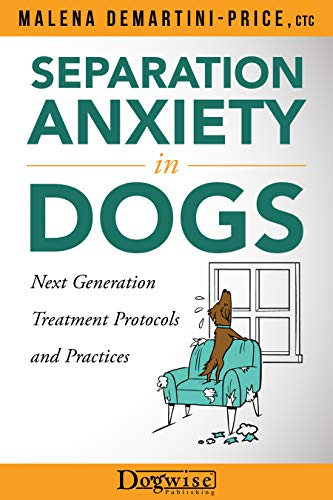Separation Anxiety in Dogs: Next Generation Treatment Protocols and Practices
amazon.com
Separation Anxiety in Dogs: Next Generation Treatment Protocols and Practices

Puppies, like adolescent or adult dogs, benefit from systematic desensitization when there is a presenting fear. A separation anxiety protocol for puppies differs only in a few aspects. It is typically appropriate to start with short sessions when working with puppies. We most often break the puppy missions up into two sections of 10 to 15 minutes
... See moreWhy not let them cry it out? Prolonged anxiety can lead to numerous issues, but the one concern I will discuss here is the potential of exacerbating fear. If a puppy is demonstrating distress when alone, and his continued cries receive no response, the result could be an increase in alone-time fear. By response, I am referring to a reprieve from
... See moreIntroduce pre-departure cues carefully and individually after some duration is achieved. Lower criteria in one aspect of difficulty if you are raising criteria in another aspect. Keep sessions at 20 to 30 minutes (there are some exceptions to this rule). Require the client to take mini-breaks between each step in their mission, approximately 30 to
... See moreConduct about five days a week of gradual and systematic absence rehearsals that follow a particular set of rules. Stay beneath or at threshold at all times. Use warmups (discussed below) as needed with the individual dog (there are some exceptions). Keep all warmups below 60 seconds (there are rare exceptions). Use variability in your day-to-day
... See moreOther than the times the client is doing specified training, the dog will not be left unsupervised.
MYTH: Dogs “grow out” of separation anxiety.
As a clinical disorder, your dog will also not likely outgrow separation anxiety.
MYTH: Some breeds are more likely to experience separation anxiety.
genetics likely plays a role in separation anxiety,